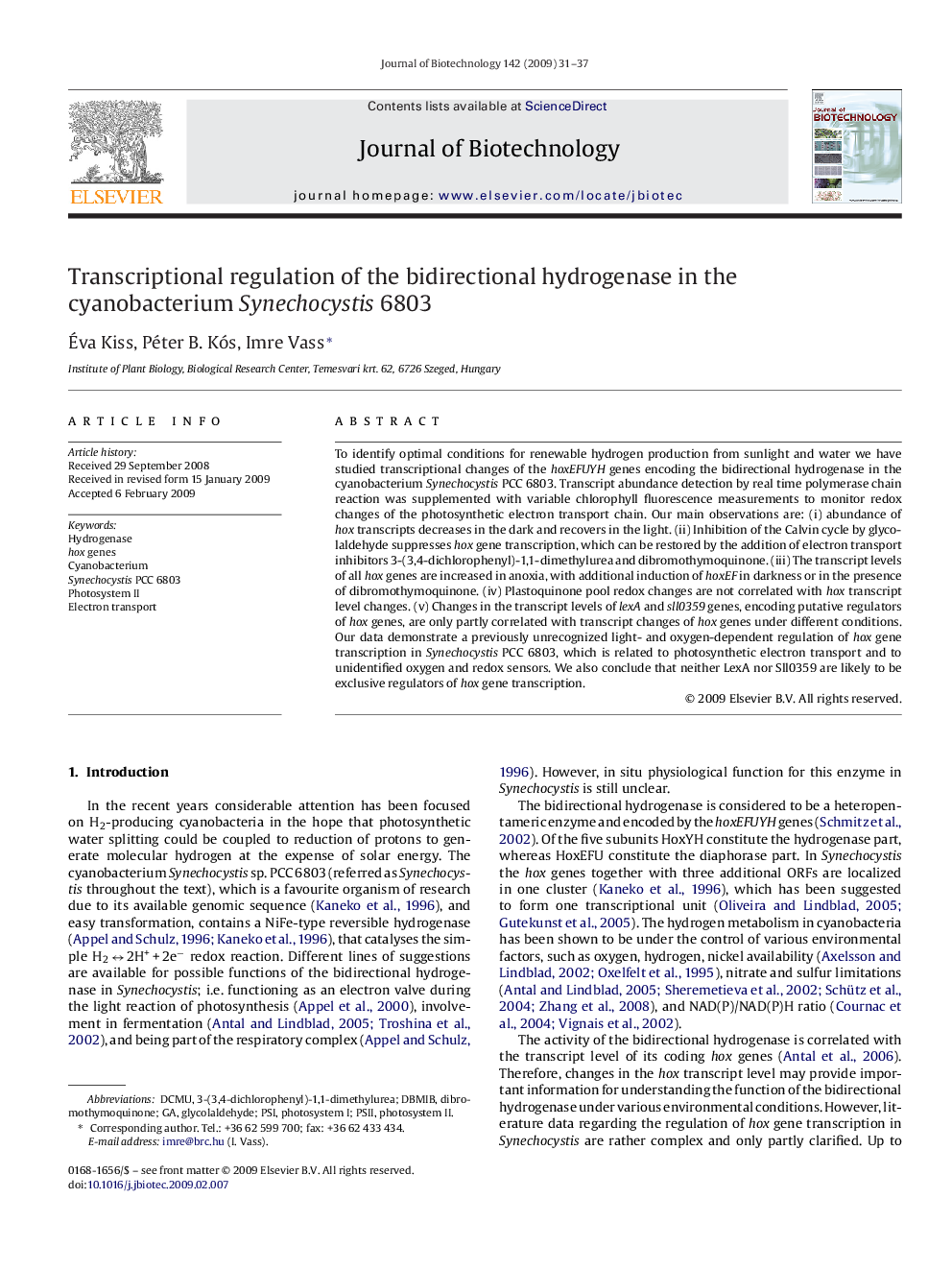| Article ID | Journal | Published Year | Pages | File Type |
|---|---|---|---|---|
| 24610 | Journal of Biotechnology | 2009 | 7 Pages |
To identify optimal conditions for renewable hydrogen production from sunlight and water we have studied transcriptional changes of the hoxEFUYH genes encoding the bidirectional hydrogenase in the cyanobacterium Synechocystis PCC 6803. Transcript abundance detection by real time polymerase chain reaction was supplemented with variable chlorophyll fluorescence measurements to monitor redox changes of the photosynthetic electron transport chain. Our main observations are: (i) abundance of hox transcripts decreases in the dark and recovers in the light. (ii) Inhibition of the Calvin cycle by glycolaldehyde suppresses hox gene transcription, which can be restored by the addition of electron transport inhibitors 3-(3,4-dichlorophenyl)-1,1-dimethylurea and dibromothymoquinone. (iii) The transcript levels of all hox genes are increased in anoxia, with additional induction of hoxEF in darkness or in the presence of dibromothymoquinone. (iv) Plastoquinone pool redox changes are not correlated with hox transcript level changes. (v) Changes in the transcript levels of lexA and sll0359 genes, encoding putative regulators of hox genes, are only partly correlated with transcript changes of hox genes under different conditions. Our data demonstrate a previously unrecognized light- and oxygen-dependent regulation of hox gene transcription in Synechocystis PCC 6803, which is related to photosynthetic electron transport and to unidentified oxygen and redox sensors. We also conclude that neither LexA nor Sll0359 are likely to be exclusive regulators of hox gene transcription.
